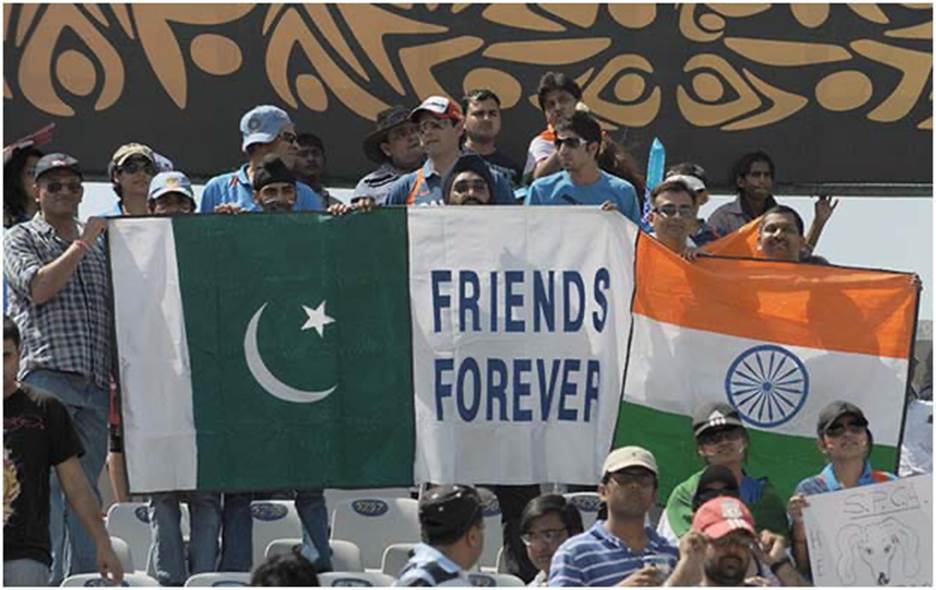
The recent Cricket World Cup in India triggers a flood of memories and recollections of stories from books about cricket that provide insights and hope for an IT professional in the Boston area
Does India-Pakistan Cricket Have to Be ‘War Without the Shooting’?
By Rajeev Soneja Boston, MA
This vivid anecdote from the historic tour of Pakistan by the Indian men’s cricket team nearly 20 years ago is one of many stories in Pundits From Pakistan: On Tour With India by Indian journalist and novelist Rahul Bhattacharya.
Wagah Border, on the Pakistan side, April 2004: “We tried to make our way through the archway and to the side of the road up which the soldiers were to march, but there too, people had lined up, seven and eight deep. The guards wouldn’t let us through. Every place we tried to squeeze into, a guard with a rifle was there to stop us. Finally, I played the India card. ‘Achchha India ke hai? Pehle hi bol dete..’. (From India? You should’ve told me earlier). He let me pass with a smile.”
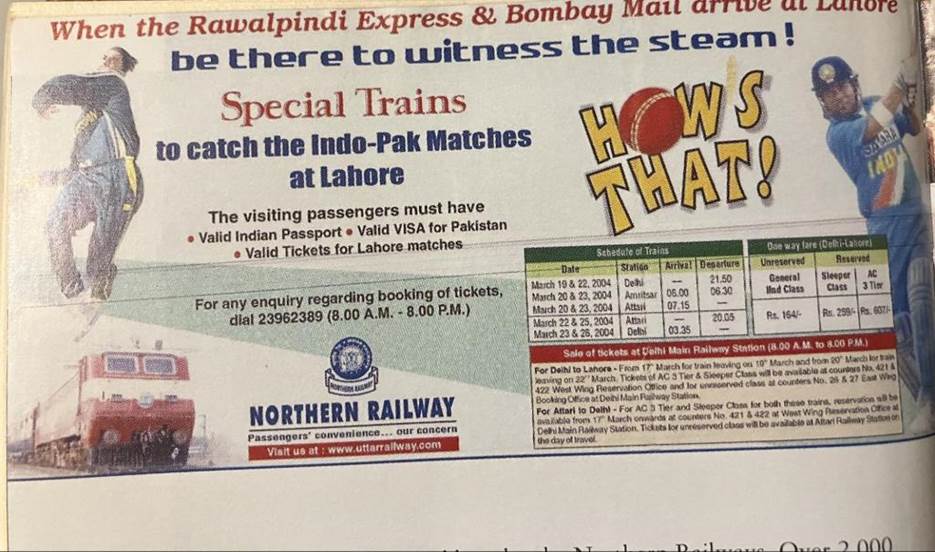
Train ticket for the Samjhauta express from the 2004 tour, reproduced in Pundits from Pakistan
Cricket tour books tend to be a prosaic blend of match reports with an occasional side of local flavor. But Bhattacharya describes his experiences with Pakistani locals elegantly and entertainingly, with an eye for detail that makes it read like a travelogue.
What comes through, without exception, is the welcoming and effusive hospitality and kindness he received while travelling through Lahore and Karachi to Peshawar, then onwards to Rawalpindi, Multan, and finally, Islamabad.
An estimated 11,000 people from India travelled to Pakistan during those few weeks of a hastily arranged tour, a rare moment of political rapprochement. The 2004 Samjhauta tour – which also saw the resumption of the Delhi-Amritsar-Lahore Samjhauta Express train service – was by all accounts a great success.
What Bhattacharya experienced during the tour – meeting former Pakistani cricketers, administrators, and his daily interactions with people in hotels, restaurants, and taxi drivers – was replicated in some measure by the thousands of cricket fans who were given visas to travel across the border for the series.
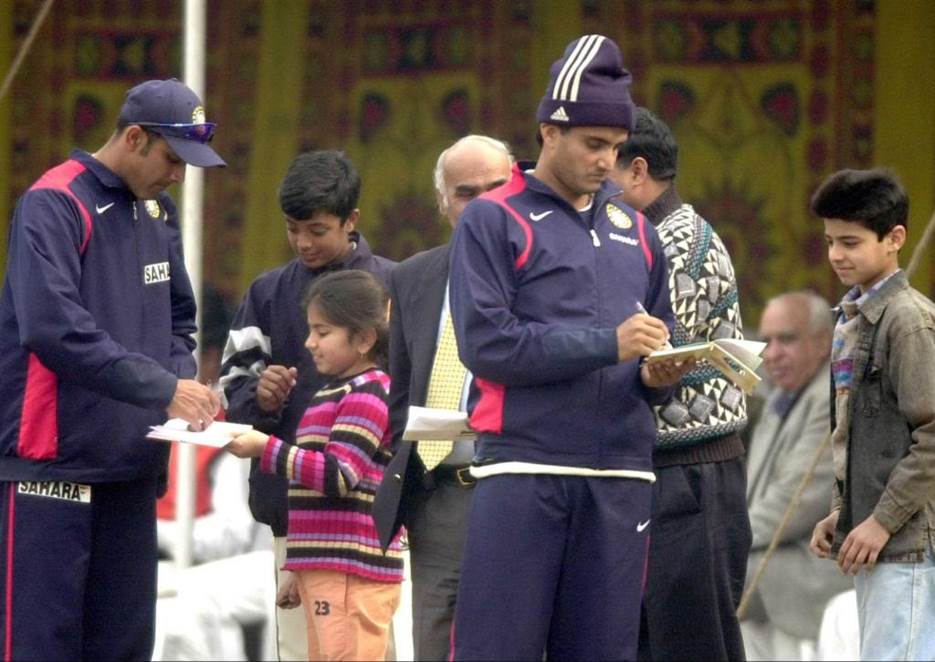
Indian players Anil Kumble & Saurav Ganguly interact with fans during the 2004 tour to Pakistan. Photo credits – Rahat Ali Dar, shared by special arrangement with Sapan News
Détente
This kind of mutual interaction and understanding is probably the only way to breach the impasse between the two nations. It reminds me of another type of détente during the Pakistan tour of India in 2005.
Senior Editor, ESPNCricinfo Osman Samiuddin , in his 2015 definitive book about Pakistan cricket, The Unquiet Ones: A History of Pakistan Cricket describes a wonderful anecdote about Pakistani journalists on a 27-hour multi-city train ride in India, digging for stories.
One such interaction that required a gradual lowering of inhibitions occurred when journalists were conversing with Indian cricketer Chetan Sharma, who is most popularly known for conceding a last ball six in Sharjah against Pakistan’s Javed Miandad, a player Indian fans loved to hate – but secretly looked at in equal parts of fear and admiration. An illustration of how people are able to connect when they meet, a kind of interaction that no regular press conference can achieve.
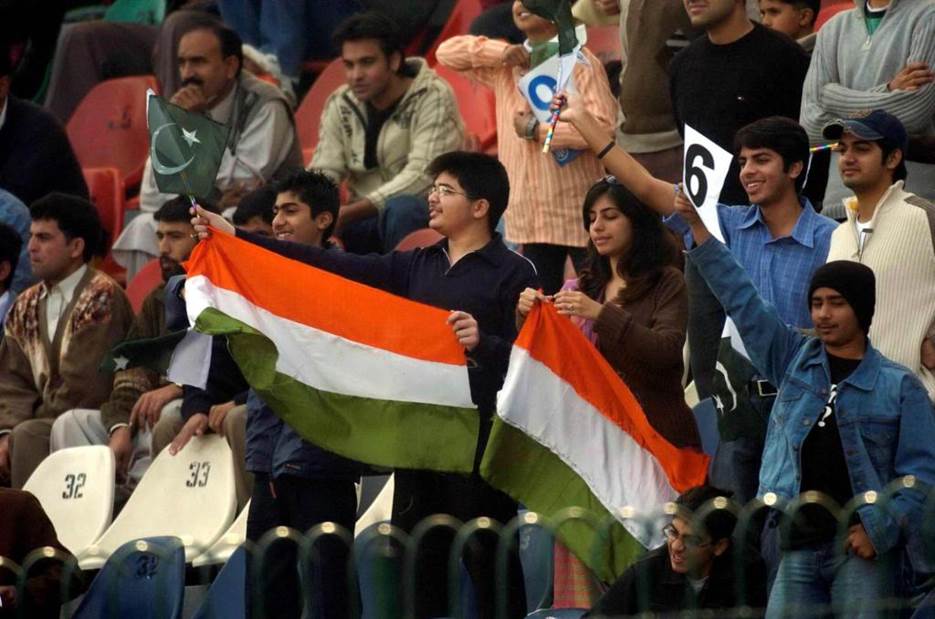
Indian Pakistani fans at a game during the 2004 tour. Photo credits – Rahat Ali Dar, shared by special arrangement with Sapan News
The history of the high-pressure games between India and Pakistan originates in the Bombay Quadrangular , and later, the Pentangular played along communal lines through the first half of the 20th century. Despite the tumultuous times that included the two World Wars and the freedom movement, the tournaments involved passion and camaraderie among players and spectators alike.
In his definitive account of the history of Indian cricket, A Corner of a Foreign Field , Indian historian Ramachandra Guha describes how politics and sport were intertwined leading up to the simultaneous independence and partition of India.
He quotes Vijay Merchant, a former player: “The communal feeling between the Hindus and the Mohammedans is a product of politics and not of sport. Cricket and the communal series brought them closer together than any other aspect of life”.
The political leadership of the two countries is often keen to propagate political ideology through cricket — periods of frequent tours are followed by long stretches when bilateral tours are suspended. However, players from both countries have always got along famously. Cricket books are full of stories about players from the two countries and their families, forming deep friendships.
A video of the Indian women’s cricket team members playing with Pakistani captain Bismah Maroof’s infant daughter captivated viewers worldwide. Their apparent comfort and ease in each other’s presence was a perfect riposte to the vitriol usually reserved during online interactions amongst the followers of the teams.
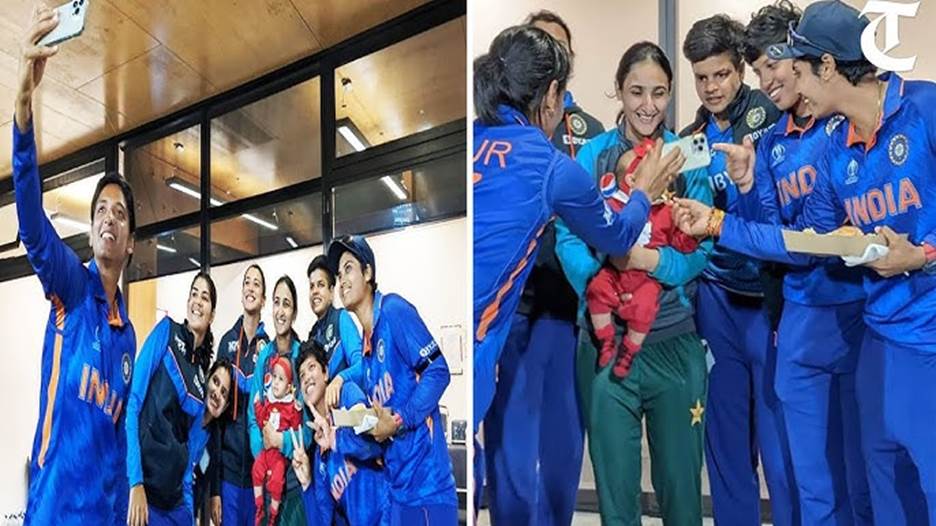
Indian cricket team plays with Pakistan team captain’s baby | Videos wins a million hearts
Some historical instances of fans responding positively to opponents include a great moment of solidarity amongst Southasian teams during the 1996 World Cup when Sri Lanka, as co-hosts, faced a boycott from Australia and the West Indies. India and Pakistan, the two other co-hosts, sent a joint team to play against their fellow co-hosts in Sri Lanka to inaugurate the tournament.
Another cherished memory is a Chennai crowd cheering the Pakistan team during a lap of honor after witnessing their own team suffer a narrow and heartbreaking loss in 1999.
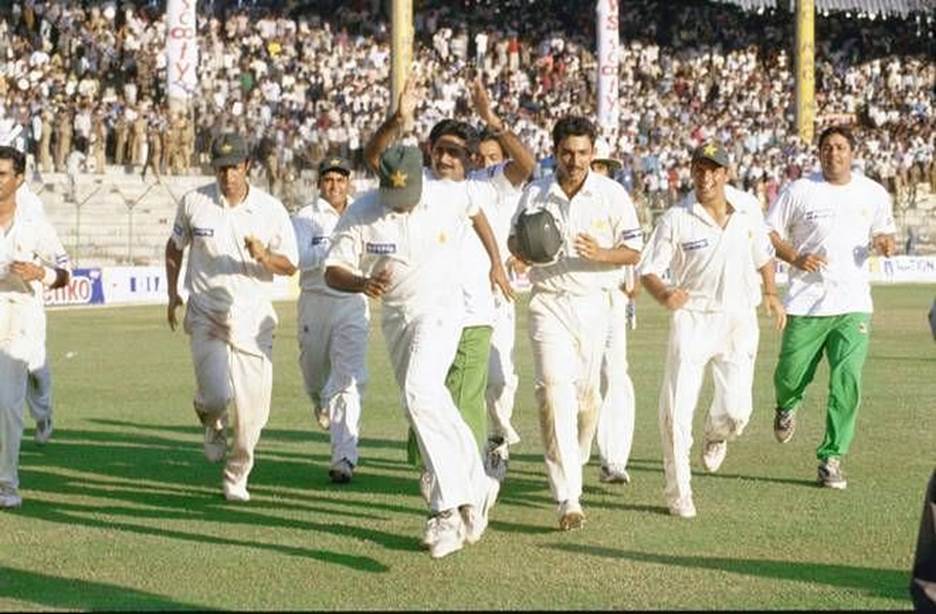
Pakistan takes a lap of honor after beating India in a test match at Chennai in 1999 – Reuters
And when volunteers in Pakistan distributed Indian and Pakistani flags during the 2004 tour, spectators embraced the idea after some initial hesitation. “Their waving the flags together garnered much media attention and goodwill,” says Mazher Hussain of Confederation of Voluntary Organizations, India, the NGO that spearheaded this ‘Flags for Peace: Partners in Victory’ campaign.
These feelings of mutual affection and bonhomie need to extend to the entire Southasian* region, which includes five of the 12 full members of the international game. Including the up-and-coming associate member nation Nepal, it is clear that the heart and soul of the game reside in this region.
Corporate takeover
Those days of solidarity and mutual respect based on equal standing amongst the teams is a mere footnote in the process that saw the corporate takeover of the sport. Since the Indian cricket board has assumed control of the international game, the onus lies on the people who follow the game in India to compel the Board into action. The chance of that happening anytime soon remains unlikely, as political imperatives that promote fear and anger continue to trump shared cultural connections.
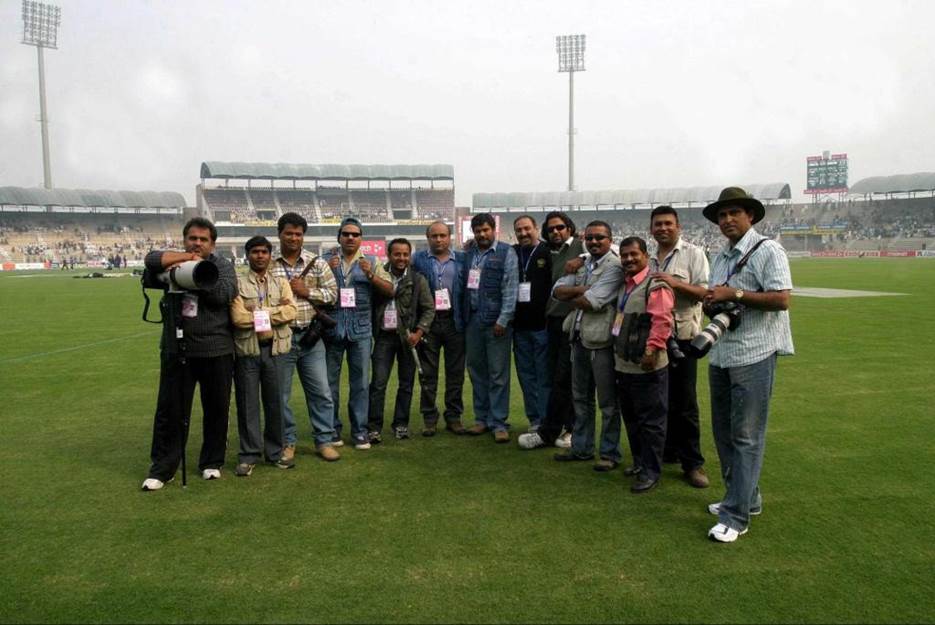
Predator turns prey! Photojournalists from India and Pakistan pose during the 2004 tournament – Rahat Ali Dar
Before the big game in the 2023 World Cup, the news media covered the wonderful reception the Pakistani cricketers got during their initial stay in Hyderabad.
However, Pakistanis did not get visas to travel, and Mohammed Bashir , a US citizen, was apparently the lone Pakistani fan in India.
Journalists from Pakistan spent the first week on tenterhooks waiting for visas to travel. The Indian High Commission began contacting them on October 12. Faizan Lakhani of Geo News, who is in Chennai now, told Sapan News that ten journalists were granted visas that evening and travelled to India the next day. ‘Chacha’ (uncle) Bashir, meanwhile, became quite the celebrity, drawing attention for his friendships with top Indian cricketers like MS Dhoni and Rohit Sharma.
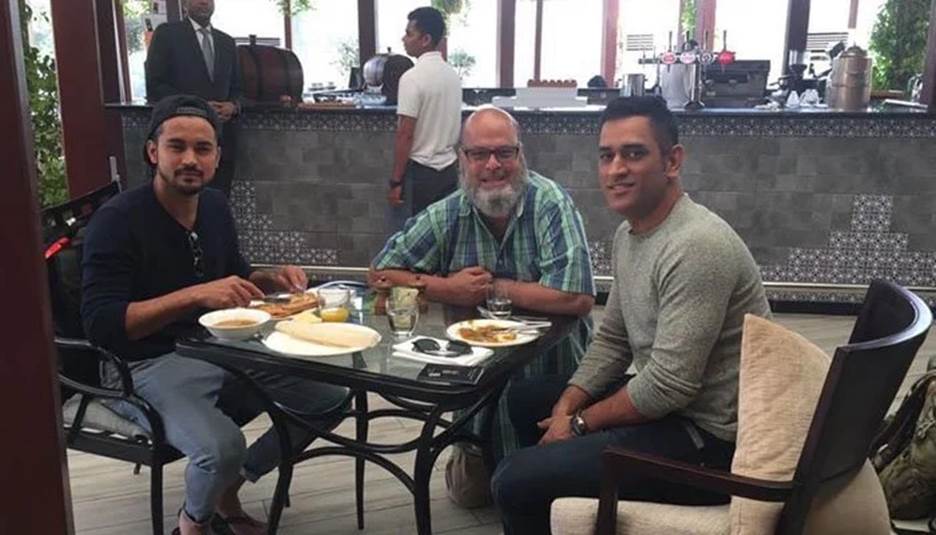
Dhoni with Pakistani origin Chicago-based fan Mohammed Bashir (Bashir Chacha), 2020 - The News
“Serious sport has nothing to do with fair play. It is bound up with hatred, jealousy, boastfulness, disregard for all rules, and sadistic pleasure in witnessing violence. In other words, it is war minus the shooting,” wrote George Orwell in his 1945 essay, The Sporting Spirit . His words were prescient.
A few decades later, American writer and journalist Mike Marqusee laid bare the hyper-commercialization of the sport in his groundbreaking book about the 1996 World Cup, War Minus The Shooting: A Journey through South Asia, in a nod to Orwell. The sport, he wrote, owes allegiance purely to capitalistic models aligned with a muscular nationalism. If Marqusee were alive today, he would not have been faulted for saying, “I told you so.”
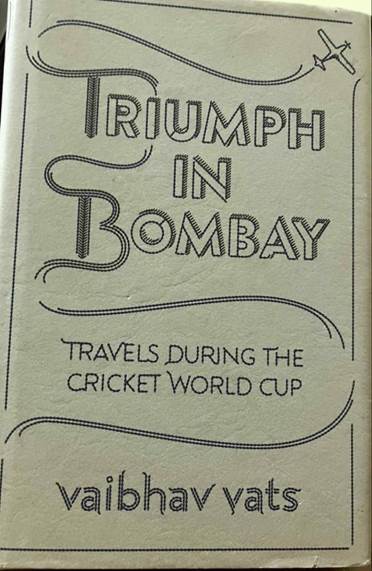
Triumph in Bombay book cover
But as a true fan of the sport, one has to continue with the hope as it’s the hope that sustains no matter how bleak the situation.
Writer and journalist Vaibhav Vats, in his 2011 World Cup account ‘ Triumph in Bombay ,’ shares a story from when India played Pakistan at Mohali in the semi-finals with leaders of the respective nations in the audience.
Shahid Afridi, the effervescent personality and incredibly popular player, was captain of the Pakistan team. Vats recounts how during a pre-match press conference, Afridi regaled the mediapersons with his usual wit and charm, even while castigating them: “Media ne jitney rishte kharab kiye hain India aur Pakistan ke beech, woh kisi ne nahi kiye” (It is the media that has ruined relationships between the two countries more than anyone else).
He too, was remarkably prescient, given the current Indian media landscape. But the hope is that someday, people in the mainstream news media will acknowledge their complicity in current affairs just like they did when Afridi told them the truth.
So, sport may be war minus the shooting, but let us aim for peace.
(Rajeev Soneja is an IT professional in the greater Boston area. Born in Bombay, he grew up following cricket, especially during the Pakistan cricket team’s 1979-80 tour of India. His ancestors are from Sindh, who settled in Quetta, moved to India in 1948 after the Partition, and eventually settled in Bombay. He would love to visit Pakistan someday.)
Note: He wrote this piece before the India-Pakistan game in the 2023 World Cup.
Lead image – Volunteers distributed Indian and Pakistani flags during an ODI game at the National Stadium in Karachi, 2004. Credits – Confederation of Voluntary Organizations, India.
* Southasia : Borrowing from Himal Southasian , Sapan uses ‘Southasia’ as one word, “seeking to restore some of the historical unity of our common living space, without wishing any violence on the existing nation-states.”
This is a Sapan News syndicated feature.

